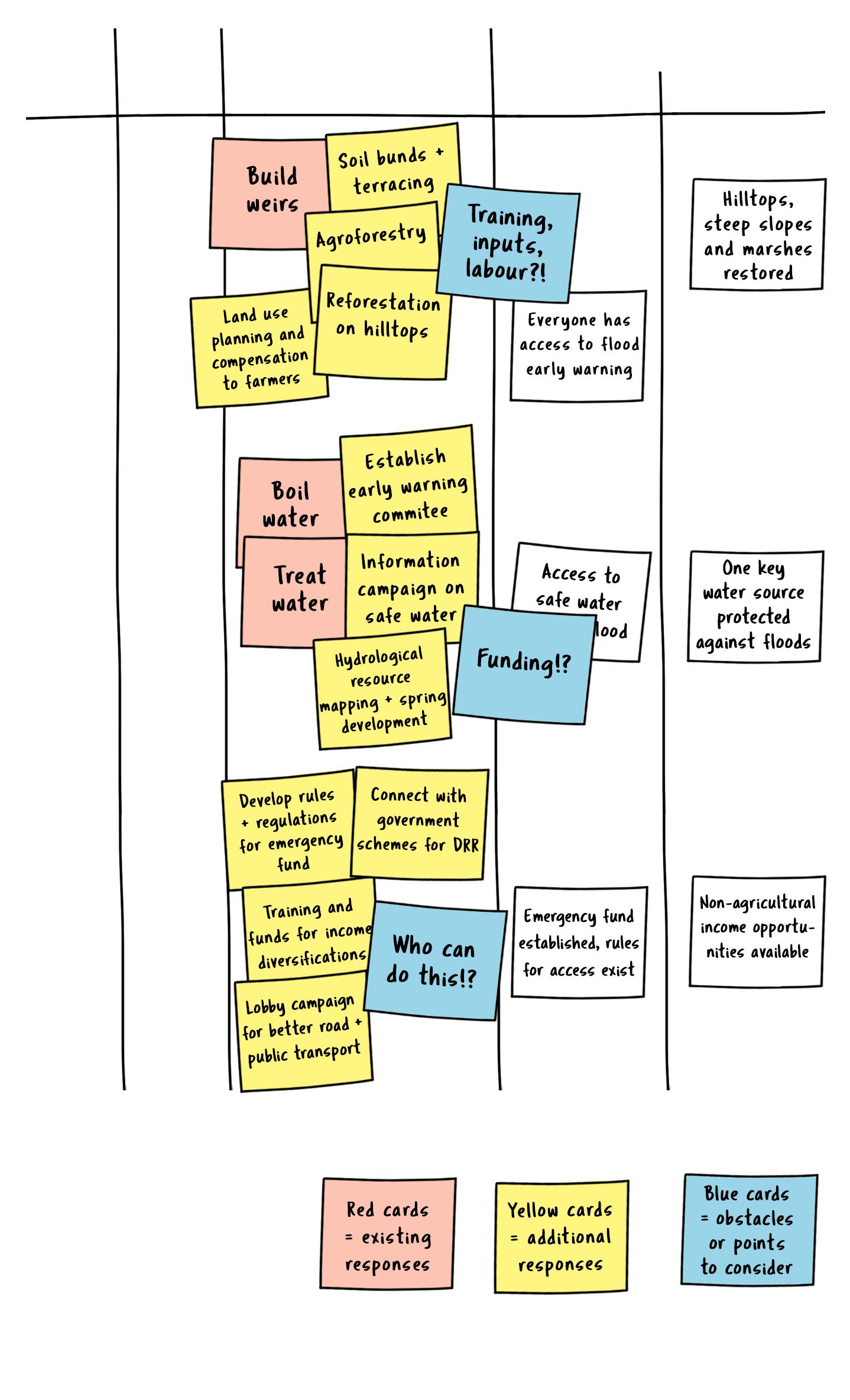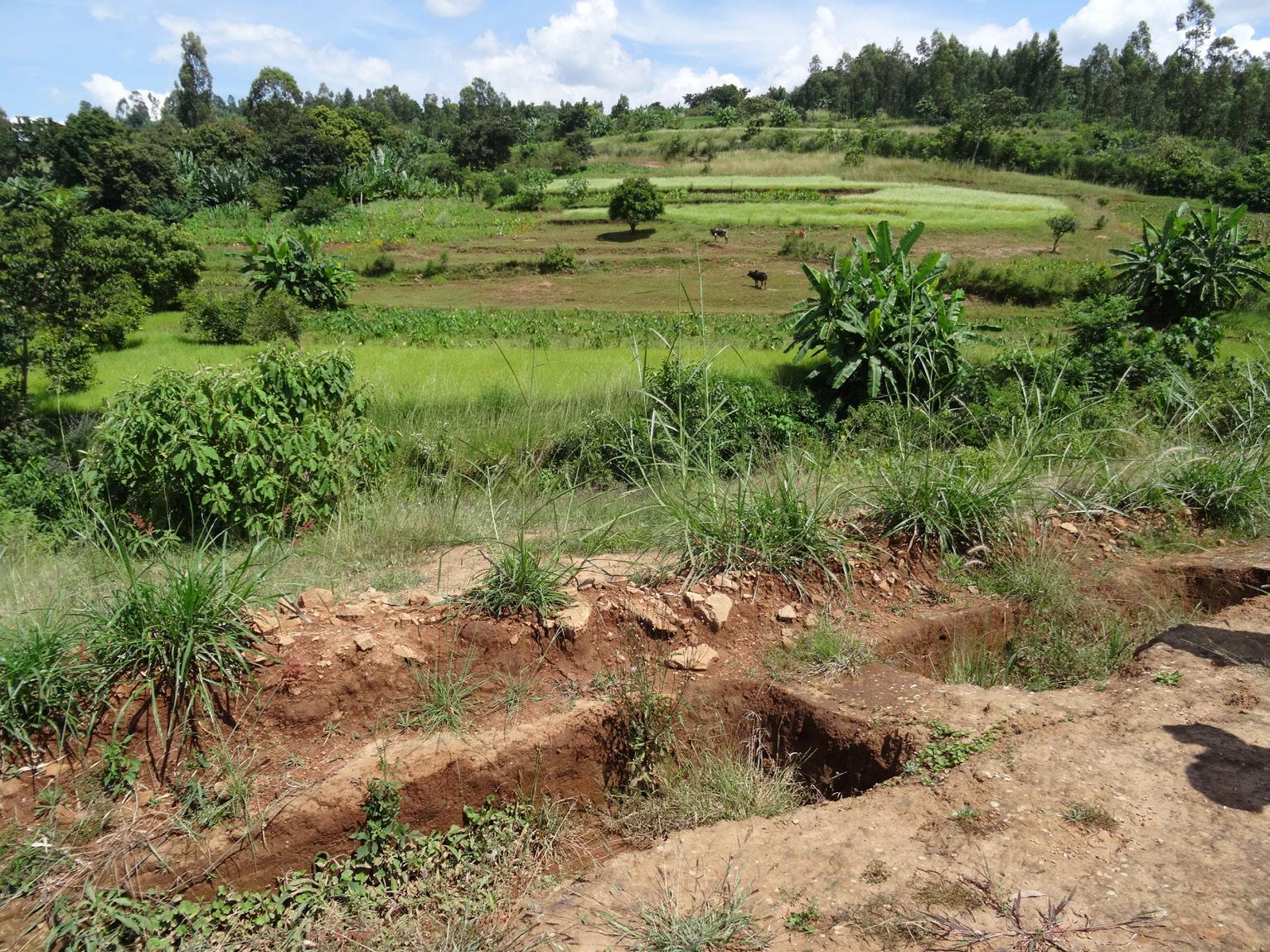
4 minute read
Exercise 7: Adaptation strategies, obstacles and opportunities
This exercise is a good time to involve additional expertise (technicians, NGOs, scientists, etc.). This can be done in a large group if participants are not intimidated by the presence of external stakeholders. Alternatively, external stakeholders can be consulted in a separate workshop.
If the exercise is done in separate groups, facilitators need two sets of the adaptation path sheets from Exercise 6. In this exercise, participants identify adaptation strategies for making progress towards the adaptation goals identified in Exercise 6, and build on the local responses identified in Exercise 5.
This exercise can be done in one large group. If this is difficult in the local context, facilitators can conduct the exercise in separate groups of men and women. The objective of this exercise is to:
Develop additional strategies for making progress towards the identified short- and long-term adaptation goals
Facilitation
Facilitators provide pencils or markers in multiple colours and smaller paper cards of various colours, and display the completed adaptation path sheets from Exercise 6 for easy reference. The facilitators then add the effective and sustainable responses from the “Evaluation of responses to the impacts of hazards” matrix (completed in Exercise 5) to the appropriate goals on the adaptation path sheets. Participants identify and add any other responses or steps that may be needed to reach the identified goals. Facilitators and resource persons, such as NGO staff, can add ideas here too.
Facilitators split the participants into groups of 4–5 to develop and discuss suitable adaptation strategies. These small groups work on one hazard and adaptation path at a time – from impact through responses, short-term goals and long-term goals. Every 5–10 minutes, facilitators ask the groups to work on another adaptation path until each group considers every goal. If time is short, each group should consider a minimum of 2–3 goals.
Facilitators remind participants to build on the identified local responses, and to keep in mind that the proposed activities should be linked to dealing with climate change. Facilitators might want to give some examples of what adaptation strategies entail to provide participants with a better idea of what this exercise is trying to accomplish. The following questions provide additional guidance:
For which impacts are the existing strategies insufficient to handle climate change?
What additional actions or strategies would be needed to reach long-term resilience?
Are there other missing responses or steps to consider?
During the exercise the facilitators can ask for obstacles to implementing adaptation strategies.
HAZARD IMPACT ADAPTATION STRATEGY
ADAPTATION GOAL SHORT-TERM LONG-TERM
Soil erosion
Flood
Water pollution
Loss of income
Sample Adaptation path sheet with all cards
HAZARD IMPACT ADAPTATION STRATEGY
ADAPTATION GOAL SHORT-TERM LONG-TERM
Soil erosion
Flood

Water pollution
Loss of income
Discussion
The facilitators bring together the men and women if the exercise was done in separate groups. Participants then discuss the proposed paths and the related activities. Questions to guide the discussion include:
For which strategies do the groups have paths in common, and for which are the paths different?
What obstacles stand in the way of implementing these strategies?
Do the identified adaptation strategies have potentially negative effects? Conflicts between user groups such as farmers vs. pastoralists? Environmental impacts on people upstream or downstream of the community?
Can the path be realized with community knowledge and resources, or is additional knowledge needed?
Obstacles and additional resources that are identified should be noted on cards and can be added to the adaptation path sheets for use in Exercise 9.
The main goal of the discussion is to verify that the developed strategies target the most important climate change impacts and other hazards in the community. Facilitators should verify that gender and minority considerations are included.
Plan one hour for preparation, 1–1.5 hours for identification of adaptation strategies, and one hour for discussion.
Remember to document the results. Annex III has templates that may be helpful.
Village chief of Makeni, Sierra Leone, comments on the adaptation strategies

Pits for increased water infiltration and terraced fields, Ethiopia


Houses with flood protection, Bangladesh
Module 6: Co-benefits of adaptation strategies

Module 6 assesses the environmental and socioeconomic co-benefits of the adaptation strategies developed in Module 5.
Much of the value of this module comes from the joint reflections of the participants, so facilitators conduct the discussion with the entire group. The objectives are to:
Highlight the important role of communities as stewards of their natural environment
Assess whether additional co-benefits can be realized through refinements in the strategies
Increase awareness of life-sustaining ecological processes such as climate change mitigation through carbon sequestration









